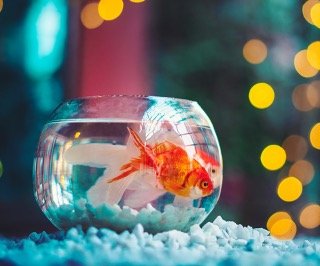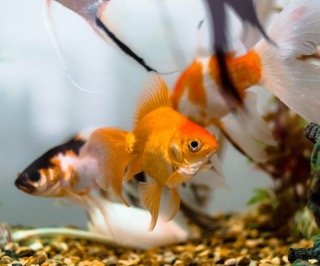
INTRODUCTION
It’s crucial to pick an appropriate substrate for the base while assembling a goldfish tank for the first time. But which substrate is ideal for goldfish?
The explanation is that there isn’t just one ideal substrate for goldfish or one option that is always the “best.”
A variety of elements that are unique to your tank will affect your choice of substrate. These factors include the kind of goldfish you plan to keep, whether you’ll be keeping real plants and whether you’re okay with them being in pots, as well as your personal aesthetic preferences for the tank.
Do goldfish require a substrate?
We should first pause to consider whether goldfish even require a substrate before attempting to choose the ideal one for your goldfish aquarium.
The fact that goldfish don’t require substrate is the answer. A substrate is not necessary, and goldfish can live quite healthily and contentedly without one. As a result, since goldfish don’t need a substrate, you may just leave the bottom of your goldfish tank empty. The absence of any substrate whatsoever can be the ideal substrate for your goldfish!
advantages of a baseless goldfish tank
One of the most obvious advantages of keeping the tank’s bottom free of any substrate is that cleaning the floor of the tank is made much simpler because you no longer need to sift through gravel or sand to remove the waste your goldfish have left behind.
Additionally, since there isn’t any gravel or other solid substrate to collect waste, there is less chance that the water will acquire the discolored or yellow tinge that frequently accompanies the decomposition process of organic matter. Goldfish are known for sifting through the substrate and swallowing up sand or gravel, which could result in issues like choking and injury. Of course, if there is no substrate to access, these issues won’t arise.
Potential issues with a base that is empty
A bare bottomed tank’s look is one of its possible issues. It is not everyone’s cup of tea, and some fish owners believe it gives the tank an incomplete appearance. Second, goldfish produce a lot of waste, which is extremely obvious on the tank’s naked floor. This is excellent for quick cleaning but not for keeping things looking neat.
When compared to the tank’s bare glass base, the growth of algae inside the tank and any outbreaks of green algae will also be much more obvious.
If you want to grow plants in your tank, a bare base might not be the ideal substrate.
Goldfish tank gravel
Although it’s debated if gravel is the greatest substrate for goldfish, it’s undoubtedly the most common.
Almost of newbies begin their goldfish keeping careers in tanks with a gravel substrate.
What kind of gravel ought to be applied?
A sort of gravel specifically made for fish tanks should be used, not just any old gravel you may find in a garden, for example, when you buy gravel to add to your fish tank.

How to fill the goldfish aquarium with gravel
It’s critical to check that the gravel is clean before putting it to your goldfish tank.
When adding the gravel to the tank, make sure it has been thoroughly rinsed many times in clear, fresh water without the use of any chemicals or soaps.
If you add gravel to an empty tank and then add water, your aquascaping will be disturbed. Your goldfish tank should be at least one third full of water before you add the gravel.
How to wash a gravel base
You will need to use a siphon with a filter to stir the gravel and suck out any waste particles without taking up the gravel as well while cleaning up your goldfish tank.
If you do this frequently, your gravel shouldn’t get too green or start to grow algae.
Cleaning your gravel is not recommended since it may upset the delicate bacterial balance in your tank and cause ammonia levels to rise. Instead, just use your siphon to vacuum the gravel, and accept any spots of algae there as the normal appearance of a healthy fish tank.
goldfish substrate made of sand
Another excellent choice for the bottom of your fish tank is sand.
Similar to gravel, you must make sure to purchase aquarium sand and not just any sand.
Sand made specifically for aquariums is known as aquarium sand. It is a very fine, soft sand that has been filtered and sieved to get rid of any dirt. In order to give fish keepers a choice of colors to complement or contrast with the other aquarium decor, it is frequently artificially colored.
Conclusion
Since every tank is unique, I can’t really say for sure which is best. You can do whatever suits your unique preferences.
There is no concern about the chemistry of your water being altered by any of these products because they are all inert substrates.
When it comes to cleaning, sand and gravel differ significantly. In my opinion, gravel is simpler to clean than sand because you don’t have to worry about it settling in your bucket as sand does.




